2019 Oregon Deer And Elk Hunting Prospects
Some Oregon hunters have already notched their tags, as bow deer and elk as well as controlled pronghorn seasons opened in August, but the bulk of the Beaver State’s deer and elk chasers are chomping at the proverbial bit for their hunts to begin.
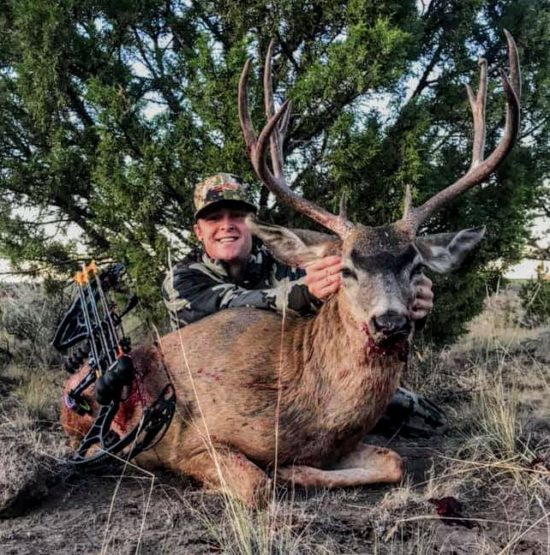
What to expect? Well, despite that harsh February, ODFW reports that there were no major winterkills reported and that bucks and does, bulls and cows pulled through the cold season.
Elk typically come through better than their smaller-bodied big game counterparts, deer and antelope, and wildlife managers say recruitment was about average. But muleys and pronghorns in the state’s far eastern edge are still down from 2016-17’s winter.
As for the prospects in specific units, each year ODFW puts out fall deer and elk hunting forecast and this year is no different. They’ve posted it here (note that three key districts, denoted below, haven’t been updated since 2018) and it’s also copied and pasted below.
NORTHWEST AREA
In general, it seems that deer and elk survived the variable winter pretty well. Access to private timberlands for the opener of deer and elk archery season will be dependent on the level of rainfall in the coming weeks. As the rifle deer opener approaches and fire danger decreases, more and more previously closed private lands will open to hunting.
Saddle Mt., Wilson, Western Trask, Western Stott Mt., Western Alsea, North Siuslaw Wildlife Management units
DEER
Black-tailed deer on the north coast (Saddle Mt., Wilson, western Trask wildlife management units) endured the variable winter with little post-winter mortality noted. Deer densities overall are moderate, but estimates of buck escapement from last year’s hunting season were again higher-than-average. Any of the three WMUs should offer decent buck hunting prospects.
There has been a lot of recent clear-cut timber harvest on state forestlands, so be sure to take a look at ODF lands if scouting for areas to hunt deer. Generally, deer densities tend to be highest in the eastern portions of these units. Most industrial forestlands will be open to at least non-motorized access once fire season is over, with the exception of Weyerhaeuser lands, most of which will continue to be in a fee access program this fall.
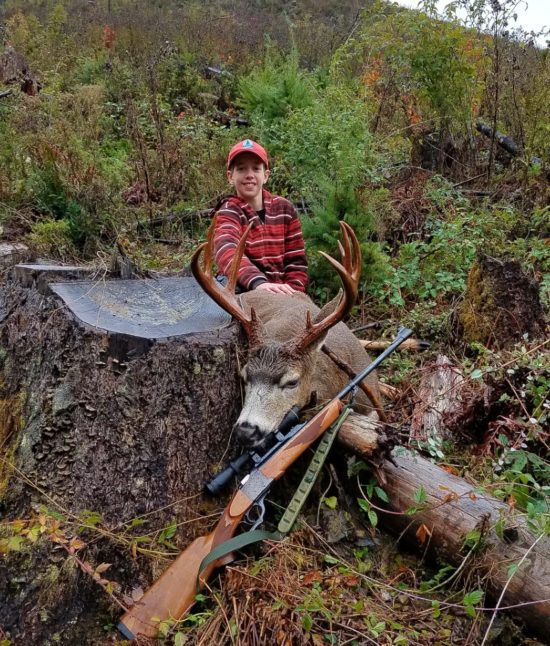
In 2019, the deer bag limit for archery hunters and hunters with a disability permit will continue to be one buck deer having not less than a forked antler.
Along the mid-coast (western Stott Mt., western Alsea, north Siuslaw), overall deer numbers appear to be stable to increasing slightly in various areas, and buck numbers are fair to good in most areas. The 2018 and 2019 growing seasons were good, which has likely improved overwinter survival. The prevalence of deer hair loss syndrome continues to be present in the district during late winter and into spring, and mortalities continue to occur due to this syndrome.
The best deer hunting opportunities are the central to eastern portions of the Alsea unit and Siuslaw unit; deer are less abundant and patchy as one gets closer to the ocean. Focus on areas of early successional habitats (grassy/brushy clear-cuts)
The Stott Mt – North Alsea and Hancock Forest Management Travel Management areas (TMA) provides some quality walk-in hunting opportunities. Hancock managed lands are open year round along the mid coast but are under a green dot protocol where only roads with green dots are open to motorized vehicles. If not green dot then walk in only.
Weyerhaeuser lands north of highway 20 utilize yellow TMA road closed signs in open public access areas. Be aware of lease and/or permit areas and please visit their recreation website for more information on access. Please obtain a TMA map online (Map 1) (Map 2) for more information on travel management in the North Alsea and Stott mountain units.
Most private timber lands are currently open to walk in public access due to lower fire season levels but this may change at any time. Keep up to date by checking Oregon Department of Forestry website or call landowners. You’ll find links to Forest Service, BLM and other landowner websites with updated fire closure information here.
Saddle Mountain Unit
Some areas to look at include Davis Point, the lower Klaskanine, Young’s, Lewis and Clark and Necanicum rivers in Clatsop County, and Fall, Deer and Crooked creeks in Columbia County. While much of the unit is industrial timberland, most timber companies offer plenty of walk-in access in some areas and open gates for dawn to dusk vehicular access in others, once the fire season is over. See the newly revised 2019 North Coast Cooperative Travel Management Area map from ODFW for details.
Wilson Unit
Clear-cut habitat continues to be created on state (ODF) and private industrial forestlands. Areas with recent logging include the North Fork Wilson River, North Fork Nehalem River, Standard Grade, Buck Mtn. and the upper Salmonberry River. Deer populations continue to be on the increase, with excellent buck to doe ratios.
Trask Unit
On state forestlands in the western portion, look in the upper Trask River and Wilson River basins. On industrial forestlands, the upper portions of the South Fork Trask River and Widow Creek, as well as Cape Lookout and Cape Meares blocks, have a lot of good habitat.
ELK
On the north coast (Saddle Mt., Wilson, western Trask) elk populations are at moderate levels, but increasing, and are at their highest in the western portions of these WMUs. Bull elk hunting this year should be good in the Wilson and Trask units due to good bull escapement from last year’s hunting seasons. Both WMUs have general season archery and rifle hunting opportunities. The Saddle Mountain also had good bull survival from the last several seasons, but bull rifle hunting is through controlled hunting only.
For archery elk hunters, most industrial forestlands will be open to at least non-motorized access once fire season is over, with the exception of Weyerhaeuser lands, most of which will be in their fee access program this fall.
In 2019, the bag limit for elk for disabled hunters in the Saddle Mtn., Wilson and Trask WMUs will not include an antlerless elk. Please check the 2019 Oregon Big Game Regulations for details.
Along the mid-coast (western Stott Mt., western Alsea, north Siuslaw), elk population numbers are lower than management objectives (MO) for the Stott, but at MO for Alsea and Siuslaw units. In 2019, the observed bull ratios were below 10 per 100 cows in the Stott Mt.; and equal to or greater than 10 bulls per 100 cows in the Alsea and Siuslaw units.
The second rifle bull elk season in Siuslaw has a bag limit of one spike bull; the bull ratio there continues to be highly variable year-to-year but is appearing to be showing signs of increasing.
Elk will be scattered throughout the units, with larger numbers of elk close to agricultural valleys and private land interfaces. Industrial forestlands north of Hwy 20 typically receive lots of hunting pressure, with young tree plantations providing good visibility and travel management roads providing walk-in access.
Early successional habitats such as clear-cuts, plantations, and agricultural land interface have the highest densities of elk. Forest Service lands south of Hwy 20 have low densities of elk, and are much more difficult to hunt in the thick vegetation and rugged terrain. Hunters should check with landowners before hunting or check the ODFW website for links to fire restrictions and closures.
Saddle Mountain Unit
Elk rifle hunting in this unit is all limited entry, but archery elk hunting is through a single general season. Both seasons are managed under a 3-point minimum regulation. Areas with higher elk numbers and open habitat include Clatsop Ridge, Davis Point, the lower Klaskanine River, Young’s, Necanicum and Lewis and Clark Rivers, and Ecola and upper Rock creeks.
Wilson Unit
Bull elk rifle and archery hunting is through general seasons, and the second coast elk rifle season has a bag limit of a “spike-only” bull. Some popular hunting areas are the lower Wilson River, God’s Valley, Cook Creek, upper North Fork Nehalem River, Standard Grade, Buck Mtn. and Camp Olson.
Western Trask Unit
For archery elk hunters the bag limit for 2019 continues to be one bull with a visible antler and this applies to the entire unit. Like with the Wilson unit, bull elk rifle and archery hunting is through general seasons, and the second coast elk season has a bag limit of a “spike-only” bull. Some popular areas with higher numbers of elk and open habitats include Cape Lookout, Cape Meares, Wilson River tributaries, lower Nestucca River and the Trask River, especially the South Fork.
Stott Mountain and Alsea units
Some popular areas to hunt elk in the Stott Mountain Unit include the South Fork Siletz River, Fanno Ridge, Gravel Creek, Mill Creek, Elk Creek, Euchre Creek, Murphy road, and the mainstem Siletz River.
Popular elk hunting areas in the Alsea include the South tract 100 line, Yachats River, Five Rivers, North Fork Siuslaw River, Big Rock Creek Road, Luckiamute River, Airlie, Burnt Woods, Grant Creek, Wolf Creek, Logsden, Pee Dee Creek, and Dunn Forest.

Scappoose, Eastern Trask, North Willamette, North Santiam Wildlife Management units
DEER
Hunters heading to the North Willamette Watershed (Scappoose, north Willamette, eastern Trask and north Santiam Wildlife Management Units) should find good hunting opportunities for black-tailed bucks. A slight decrease in post-season buck ratios in the eastern Trask WMU should not decrease the number of mature bucks for hunters in the eastern Trask unit. There was an increase in buck ratios for the north Santiam and Scappoose WMUs, which should make it easier to find a legal buck in both WMUs this coming hunting season.
Regardless of which WMU you hunt, the late closure (Nov. 1) of rifle buck season should produce good hunting opportunities during the last few weeks of the season. Deer Hair Loss Syndrome continues to be more prevalent in the Scappoose Unit but only spotty in the low elevation lands in the eastern Trask.
Hunters are reminded to contact local timber companies to obtain updated access information and check the Oregon Dept. of Forestry’s website for fire restrictions and closures. Archery hunters may find many industrial timberlands closed to access due to fire season restrictions. State and Federal lands typically remain open during the archery season and provide the primary hunting opportunities.
Hunter access to the majority of Weyerhaeuser lands in the Scappoose, eastern Trask and north Santiam WMUs will be limited to those hunters who purchased an entry permit. Hunters can obtain a 2018 North Coast Travel Management Area map showing landownership and access opportunities at the northwest Oregon ODFW district offices.
The majority of properties in the Willamette Unit are privately-owned and hunters are reminded to obtain permission before hunting on those lands. Hunters headed to the north Santiam have a variety of access opportunities from federal forestland, private timberland and agricultural properties.
Scappoose Unit
Buck escapement from the last three seasons should result in average hunting this fall. While younger age class bucks typically make up the majority of the harvest, hunters should also find a few mature bucks to keep things interesting. Hunters should be looking for habitat that has a variety of plant components and associated water sources for deer concentrations. Hunters with access to agricultural lands will find higher populations of deer.
Some areas to locate deer this fall include Tater Hill, Long Mt., Serafin Point, Burgdorfer Flat, Buck Mt. Bunker Hill, Baker Point, Bacona, and the hills above Pebble Creek.
East Trask Unit
Fall deer surveys show buck ratios similar to 2018 and opportunities for deer hunters should be average this fall in the eastern portion of the Trask WMU. Some of the best hunting is on private timberlands where timber harvest has occurred within the last three to five years.
Hunters wanting to experience less road traffic and more walk-in hunting opportunities are encouraged to explore the Upper Tualatin-Trask Travel Management Area located west of Henry Hagg Lake.
Some areas with good habitat include the upper portions of the Yamhill and Tualatin Rivers, Trask Mountain, Barney Reservoir, Pumpkinseed Mt., Green Top, and Willamina Creek.
North Santiam Unit
The north Santiam Unit buck ratios were significantly higher than in 2018 so prospects should be better this season for those hunters willing to hunt thick cover where deer concentrate. Hunters will find a wide diversity of terrain in the WMU, ranging from high elevation meadows, thick, old growth forests, industrial forestlands and agricultural fields, so a variety of hunting styles can be used.
Whether hunters choose to still hunt, set up a tree stand, rattle antlers or conduct deer drives, scouting will be critical for success. Hunters looking to stay closer to home should consider hunting on industrial forestlands where land managers are reporting deer damage to recently planted conifer stands.
Some locations to consider include the upper Collawash and Clackamas Rivers, Granite Peaks, High Rocks, Butte Creek, and Molalla River.
North Willamette Unit
The long hunting season in the Willamette Unit should provide hunters with a very good opportunity to harvest a deer this season. Deer damage to agricultural crops remains high throughout the northern portion of the unit. Hunters are reminded that land within this unit is primarily privately owned. Hunters need to have established a good relationship with landowners to ensure a hunting opportunity.
Hunters can find some public land hunting opportunities in the Willamette River area. Many of the hunting spots are also listed on ODFW’s Hunting Access Map.
ELK
Bull elk hunting in the coastal mountains of the North Willamette District should be similar to last year in both the Scappoose and eastern Trask WMUs. Overall elk populations in both WMUs are below the management objective and antlerless elk tags available to hunters will be similar to 2018
In the Scappoose WMU, elk are more numerous in the timberlands of the northwestern and agricultural lands along Hwy 26. In the eastern Trask, elk are widely scattered and can be found near agricultural fields and within the private timberlands.
In the north Santiam WMU, elk populations in the Mt. Hood National Forest continue to decline due to limited forage availability. Instead, hunters will find the majority of elk on the industrial forestlands and agricultural fields at lower elevations. Hunters should concentrate their efforts on these low elevation lands for their best chance of success. Contacting private landowners prior to the hunting season will be the key to finding these elk. Remember to always ask for permission before entering private lands.
The majority of Weyerhaeuser lands in the Scappoose, eastern Trask and northern Santiam WMU’s are limited to those hunters who have a lease agreement or acquired an access permit.
Scappoose Unit
Harvest should continue to be dominated by younger age class bulls, but there should be a few mature bulls available for the persistent hunter. The bull ratios were lower than in 2018 so hunters may have to work a little harder to find a legal bull.
Remember that most of the timberland managers within this WMU participate in the North Coast Travel Management Area and hunters should read and follow all posted regulations to ensure continued access.
Some areas to consider include Upper McKay Creek, Green Mountain, Buck Mt., and Bunker Hill.
East Trask Unit
Bulls will be widely scattered throughout the WMU and hunters are encouraged to spend time scouting in order to locate elk before the season begins. Late season antlerless elk hunting opportunities will be similar to 2018 to address elk damage concerns in some areas. Hunters that have drawn an antlerless elk tag should still have good success if they can find elk concentrated near agricultural fields and low elevation timber stands.
Hunters need to be aware of frequent changes of land ownership in the agricultural-forest fringes and always ask for permission before entering private lands.
Hunters wanting to do more walk-in hunting should be looking at the Upper Tualatin-Trask Travel Management Area west of Forest Grove as a good option. Other areas to consider include Trask Mt., Stony Mt., Windy Point and Neverstill.
North Santiam Unit
Declining elk numbers within the Mt. Hood National Forest will make for poor elk hunting on public lands, and hunter success should be average on lower elevation private timberlands. Hunters heading for the Mt. Hood National Forest will find elk highly scattered and difficult to locate. Scout early and often to be successful there.
Places to begin scouting include Timothy Lake, Rhododendron Ridge and Granite Peaks. At lower elevations, hunters should explore Butte Creek, Upper Molalla River and Eagle Creek.
S. Santiam, Mckenzie Wildlife Management units
DEER and ELK
Although the long-term harvest and hunter participation trend has been declining for both deer and elk over the last couple of years, harvest has stabilized and success rates have seen a slight increase recently.
Hunters who are knowledgeable about habitat, take the time to scout and then hunt hard, will have the best chance for success. Populations are strongly tied to habitat conditions and hunting prospects are fair to good in places with high quality habitat. Hunting prospects are poor in lower quality habitats.
Forage is key to good deer and elk habitat. Early seral (brush and forb) forest conditions provide some of the best deer and elk forage. On public lands, early seral habitat is often found in areas burned by wildfire and may be found in thinned areas if the enough trees were removed. On private timberland, forage is best in clear-cuts beginning a couple years after the timber harvest.
Elk herds are below population management objectives resulting in reduced antlerless hunting opportunities, particularly on public lands. However, bull ratios for 2018 were above population management objectives, but slightly below the 20-year average.
Black-tailed deer populations are below buck ratio population benchmarks. Rifle hunters typically find the best success in the later portions of the season when the leaves drop and the rut approaches. Archery deer hunters consistently have the best success during the late season.
South Santiam Unit
The old B&B Fire in the Santiam Pass area continues to hold good numbers of deer but the brush is becoming fairly thick, making the hunting a bit more challenging. Still, this is a good early season place to hunt on National Forest lands if the private lands are closed to access. You can find elk around the edges of the burned area.
Mckenzie Unit
Good news for McKenzie unit hunters! We have a new Travel Management Area (TMA) called the East Lane TMA. The TMA will be open 7 days a week from the opening of the Western Cascade General Buck Deer season until two days after the season closes. The 39,825 acre TMA is comprised of dispersed blocks of land located in the McKenzie and Indigo units. Stop by the Springfield ODFW office to pick up a free TMA map.
Hunters can also downloaded a geo-pdf map from the ODFW website. Use the downloaded maps with the Avenza Maps app on your smart phone (be sure to enable the phones GPS function) and your location will be plotted on the TMA map as you move throughout the area.
The significant snow event in February 2019 resulted in minimal winter?killed deer and elk. Hunters should expect game populations to be similar to previous years.
SOUTHWEST AREA
Current black-tailed deer research in ongoing in a number of wildlife management units in the southwest area. Preliminary results show the local deer population is stable or slightly higher than previous projected.
W Tioga, Powers, and portions of Sixes Wildlife Management units
DEER
Deer population abundance appears to be stable in Coos County, overall. Deer herd dynamics such as buck ratio are measured after the general rifle buck season concludes each year to indicate how many bucks survived the hunting season and will be available the following season.
Based on last year’s surveys and recent research, it appears buck ratio in the Tioga Unit have maintained appropriate levels and should produce a good opportunity this year, if the weather cooperates. As in the past, surveys indicate deer densities are highest in the Sixes and Powers units.
Hunt for deer in brushy openings, meadows and clear-cuts where brush is beginning to grow up. Areas where vehicle access is limited will be the most productive. Scouting before the season will increase your odds of success.
In the past few years there have been some large tracts of private timber company lands that changed ownership. Some of the new owners have different public access policies than past owners. Hunters need to make contact with private landowners and managers to ensure they may access private land where they intend to hunt. In some cases, land owners and managers will charge a fee for access.
Luckily the Tioga unit incorporates one of the state’s newest Access Area, the Coos Mountain Access Area. This area is a cooperative agreement between private timber companies and BLM that secures year around access for the next three years, with no additional fees.
In addition, there is still a lot of Bureau of Land Management land, National Forest land and the Elliott State Forest for hunters to hunt. It is imperative that hunters know the access policy for the land they’d like to hunt. Signs at access points will often provide information regarding public access and permit requirements. If permits are required, there also may be information on how to get them.
Hunters also should be prepared for access restrictions on private lands due to fire concerns. This is especially true of hunters who want to hunt the bow season in late August and September. This year has been particularly dry in the coast range and has resulted in a situation where taller grass is now dry and may ignite easily. Hunters may find area fire restrictions at the Coos Forest Protective Association’s website.
ELK
Elk populations are above the management objective in the Sixes Unit and close to objective in Powers and Tioga. Bull ratios have been relatively good in all units. Generally moisture retention is best on north slopes and as a result grass growth is best there. Those hunting in bow season should concentrate their efforts on these slopes. Fall rains, when they come, will have an effect on elk distribution in the controlled bull seasons in November.
Human activity is often the most important factor determining elk locations. Expect Elk to move to places where vehicle and other human activity are minimized. During times of significant human activity, like during controlled bull seasons, human disturbance can be more important in determining elk distribution than food availability.
This means road closure areass are often the best places to find elk on a regular basis. Within these areas, hunting may be best on north-facing slopes in the early seasons. Thinned timber stands are a particularly productive habitat type in the Oregon Coast Range. Thinning the tree canopy encourages grass and brush growth on the ground, improving feed quality.
In the past few years there have been some large tracts of private timber company lands that changed ownership. Some of the new owners have different public access policies than past owners. As is the case for deer hunters, elk hunters need to make contact with private landowners and managers to ensure they may access private land the hunter intends hunt. In some cases land owners and managers will charge a fee for access.
Luckily the Tioga unit incorporates one of the state’s newest Access Area, the Coos Mountain Access Area. This area is a cooperative agreement between private timber companies and BLM that secures year around access for the next three years, with no additional fees.
In addition, there is still a lot of Bureau of Land Management land, National Forest land and the Elliott State Forest for hunters to hunt. It is imperative that hunters know the access policy for the land they’d like to hunt. Signs at access points will often provide information regarding public access and permit requirements. If permits are required, there also may be information on how to get them.
Hunters also should be prepared for access restrictions on private lands due to fire concerns. This is especially true of hunters who want to hunt the bow season in late August and September. This year has been particularly dry in the coast range and has resulted in a situation where taller grass is now dry and may ignite easily. Hunters may find area fire restrictions at the Coos Forest Protective Association’s website.
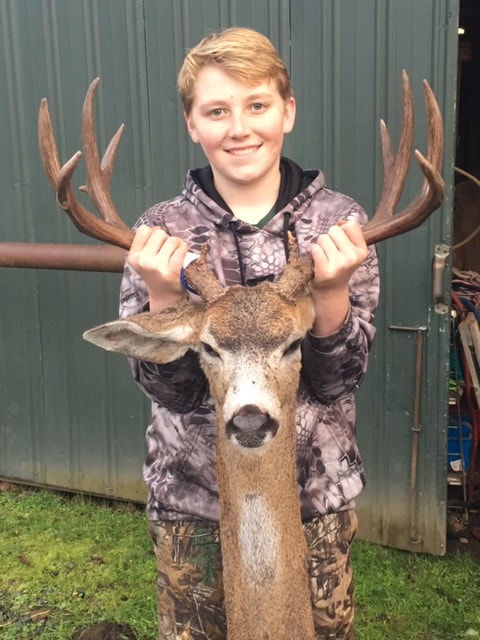
Dixon, Indigo, Evans Creek, Melrose, E Tioga and NE Powers Wildlife Management units
(The 2019 update for these units was not available at press time. For your information, we have included last year’s information below.)
DEER and ELK
Deer hunting should be good in the Cascades and Umpqua Valley. Elk hunting in the Cascade Units should be about the same as the past few years.
Spring surveys indicate good over-winter survival for deer and elk in the Douglas portion of the Umpqua District. The fawns per adult deer ratios in the Dixon, Indigo and Melrose have been stable to increasing over the last few years. Elk numbers in the Tioga Unit are close to population management objective and doing well. Cascade deer and elk hunters will have better success hunting areas with good cover adjacent to openings.
Some of the better wildlife openings are created by clear-cuts, thinnings, or a few years after wildfires. Recent fire activity in the Dixon and Evans Creek units are already producing great forage and cover for deer populations. This should improve deer hunting in the Umpqua National Forest for years to come.
Private agricultural lands and Industrial timberlands throughout the Douglas County area are also producing great habitat for deer and elk. Hunters need to obtain permission and be respectful of access and follow restrictions in place during the late fire season. Hunters should check weather forecasts frequently as that will play a key role with fire season restrictions and hunting access.
Over the past few years, western Oregon rifle deer hunters have done fairly well in the Cascade Units (Indigo/Dixon) and recent surveys show that trend should continue as long as the weather cooperates. Cascade elk hunters have averaged about 5percent success over the past few years and this year is expected to be the same.
The fire activity in recent years will create great big game habitat in the years to come. However, in the short term, hunters may want to concentrate their efforts elsewhere and stay out of the very recently burned areas.
Hunters unfamiliar with this area are advised to hunt smarter, not harder. Use Google Earth or Google Map (satellite layer) to explore the area with a birds-eye view and get an idea of the terrain and vegetation. Get a hold of some good maps from the Forest Service/BLM/Local Fire Protection Association and use them in conjunction with Google Map to locate areas away from roads that will provide you a quality hunting experience. Another good source of information is to view historic fire perimeters online at Geomac.
These maps will give you an idea where large areas have been opened up by wildfire, which enhances forage opportunities for deer and elk. Find the food, and you’ll find the game.
N. Indigo Unit
In the Indigo, the Tumblebug Fire that burned in the upper Middle Fork Willamette drainage improved deer habitat, and the deer population in the area is expected to improve over the next few years. Additionally, the US Forest Service and sporting organizations such as Oregon Hunters Association and Rocky Mountain Elk Foundation have been hard at work thinning old clear-cuts to improving forage conditions south of Hills Creek Reservoir. These habitat projects will help maintain the deer and elk populations in the area.
Still, the strongest deer and elk populations occur on private lands where expansive timber harvest results in improved forage. Please remember to check access restrictions before hunting on private lands.
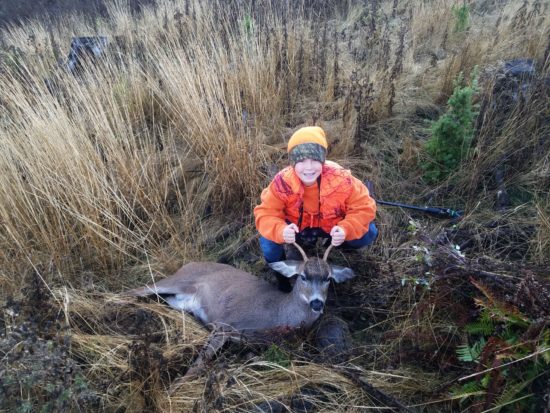
Applegate, Chetco, Evans Creek, Rogue, portions of Dixon, and Sixes Wildlife Management units
(The 2019 update for these units was not available at press time. For your information, we have included last year’s information below.)
DEER
Overall black-tailed deer populations remain good in our district. In general, the Rogue, Dixon, Evans Creek and Applegate units within Jackson County have mostly a migratory deer population. Within these units, hunt in high elevation (above 4,000 ft.) during the early half of the season and hunt lower elevation (below 4,000 ft.) during the late half of the season after deer have migrated. Deer in Josephine and Curry counties will be found at all elevations throughout the season.
Big game hunting statistics indicate that all units within Jackson, Josephine, and Curry counties had a decrease in black-tailed deer hunter success last year. The Rogue unit had a success of 16 percent in 2017 which is down from 20 percent in 2016. Dixon is down from 31 to 30 percent, Evans Creek decreased from 34 to 31 percent, Applegate is now at 30 percent compared to 31 percent, and the Chetco dropped from 37 to 30 percent.
However, over the past four years deer hunter harvest has remained roughly the same in all five units, indicating that this year should be the same. One reason for the decrease in hunter success in 2017 could be the large number of fire closures in the area that prevented many hunters from getting to their traditional areas until late in the season.
ELK
Elk numbers in recent years are lower on most of the public lands and pre-season scouting is very important. As most private timberlands are closed until fire season restrictions are lifted, look for many hunters to be sharing our public lands. The best place to look is on lands with minimal roads and north facing slopes during periods of warm/dry weather.
Cascade general elk season success rates have been roughly the same over recent years with the Evans Creek success slightly up to 10 percent success and the Rogue Unit slightly up at 4 percent success. In the coast elk seasons, Chetco hunter success was up, with first season at 27 percent and second season at 24 percent. Applegate coastal seasons were up in 2017, the first season doubled to 2 percent success and the second season had a 5 percent success.
COLUMBIA AREA
Fawn ratios were a bit higher than the previous two years, which should translate into a few more yearling bucks out on the landscape. Elk numbers are stable in this area. Heavy cover can make hunting challenging in forested areas
Hood, White River, Maupin, West Biggs Wildlife Management units
DEER
The West Biggs and Maupin units both have buck ratios above management objective. Surveys indicate a buck ratio of 23 bucks per 100 does in the Maupin unit and 28 bucks per 100 does in the West Biggs unit. In the West Biggs unit, buck ratios are highest in the John Day River canyon at 29 per 100, mostly due to inaccessibility of vast areas within the canyon.
The John Day can offer a great hunting experience if the water is high enough to float, giving hunters access to public lands within the canyon. Surveys once again showed higher buck ratios in the John Day Canyon than in the Deschutes river canyon, but not by much. The buck ratios were at 29 and 26 bucks per 100 does, respectively.
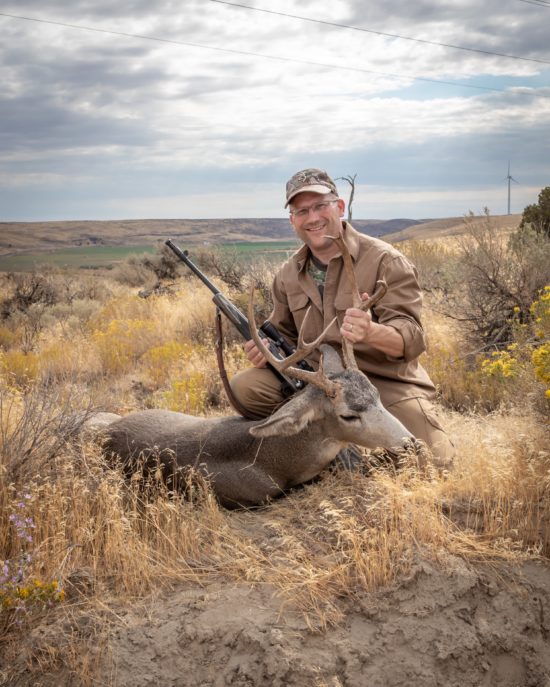
Private lands within all of these areas are a stronghold for buck numbers, but with hunting pressure, the deer do get moved around to public hunting areas as well. Spring fawn ratios in Maupin and West Biggs units were both very low this year. Hunters can expect to see fewer yearling bucks while out hunting these units.
The deer population in the White River unit continues to decline, mostly due to poor fawn recruitment. This year, overwinter fawn survival was slightly lower than last year but higher than the harsh winter of 2016/ 2017. As in 2018, surveys indicated a buck ratio of 18, which is under management objective for the unit.
Most deer within the unit spend the summer at high elevation. Most hunters focus on lower elevation areas, where deer are less concentrated. Check out higher elevation areas to get away from other hunters and locate a buck to harvest. If planning to hunt any private timberlands in the unit, check on fire regulations with these landowners prior to heading out.
The deer population in the Hood unit is very difficult to monitor with typical survey methods but it can be assumed that it is seeing a decline similar to that in the White River unit. Hunters headed for the Hood Unit should pay close attention to land ownership and fire restrictions. Some of the best hunting in the unit is on private timberlands, and hunters should always check with these landowners to find out the most recent regulations. An access permit is required to hunt on Weyerhaeuser properties within the unit.
Hunters can target high elevation meadows in the Mt Hood Wilderness to get away from other hunters in the unit. Rainy or high pressure weather systems typically increase both deer activity and opportunities to spot a buck.
ELK
Elk populations district wide are stable and above management objective for all units. Bull ratios are at management objective of 10 bulls per 100 adult cows. Elk are fairly low density across the Mid-Columbia district and hunting is general season any bull for both first and second season.
In the White River and Hood units, heavy cover can make harvesting a bull difficult. Elk can be very scattered, so covering a lot of ground in areas where you find some elk sign is key to success. Most hunters focus on the second season because it’s longer and there’s an increased chance for harsh weather and better tracking conditions.
First season hunters will enjoy a much more secluded experience, with less chance of running in to other hunters. Archery hunting the White River and Hood units can also be less crowded than other areas of the state.
Most elk in the Maupin and West Biggs units are found on private lands, so make sure you getpermission before hunting these areas. A few elk can be found on BLM and state lands in these units and hunting pressure is very low.
CENTRAL AREA
The late winter snowfall and continued precipitation have generated excellent forage conditions and above-average moisture throughout the district. Early-season hunters can expect game species to be distributed throughout their range.
Maury, Ochoco, Grizzly Wildlife Management units
DEER
Buck ratios are at or above management objective for the Maury, Ochoco and Grizzly units, with a district-wide average of 20 bucks per 100 does. Over-winter fawn survival was lower than normal due to late-winter snow. This will result in fewer yearling bucks (spikes and forks) available for harvest this fall. However, the increased moisture this year has improved forage conditions and we expect deer to enter the winter in good body condition, benefiting future age classes.
Harvest rates last year were about average for both rifle and archery hunts in all three units. Throughout the district, deer populations continue to be lower than management objectives due to habitat loss and disturbance, poaching, predation, disease and road kill.
Archery hunters are reminded that the Maury unit is a controlled deer archery unit and archers must have a controlled entry buck tag to hunt. Hunters can expect to see larger, older age class bucks as a result of these tag reductions. Remember to pick up a motor vehicle use map for the Ochoco and Deschutes national forests so you know what’s open and closed.
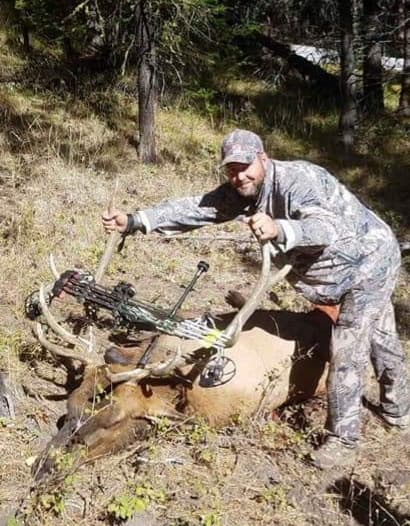
ELK
The bull ratio in the Ochoco WMU is above management objective, but bull ratios in the Maury and Grizzly remain below MO. The elk population in the district is holding steady. Hunter harvest last fall was about average throughout in the Ochoco and Grizzly WMUs, but below average in the Maury WMU.
The late winter snowfall impacted our elk population, and calf ratios are slightly lower than normal. However, the improved water and forage conditions throughout the summer will benefit the elk as they head into the winter. Wide distribution of forage and water can also lead to a wide distribution in elk, so hunters can expect to find them spread out throughout their range and they may not be as concentrated as other years.
Typically, elk hunting improves as you get further away from open roads. Elk bow hunters must have a controlled Maury Unit bull tag to hunt elk in the Maury Unit.
The Maury and Ochoco units offer the most public land hunting opportunities, while the Grizzly unit is mostly private land where access can be difficult. Ochoco unit rifle hunters are reminded the Rager and South Boundary TMA motorized vehicle restrictions will be in effect. Maps of those areas are available on ODFW’s website and from ODFW and Ochoco National Forest offices, as well as signboards as you enter the TMAs.
A majority of public land cow elk tags have been eliminated in the Ochoco unit due to declining elk populations on national forests. Private land hunts for the Ochoco unit are intended to increase elk use on the national forest and eliminate elk staying onto private lands throughout the seasons.
Upper Deschutes, Paulina, Metolius, N. Wagontire Wildlife Management units
DEER
There should be good numbers of both mature and yearling bucks available in most units relative to the population size. Overall deer populations are below desired management objective district-wide. As usual, weather conditions prior to and during hunting seasons will have a big impact on hunting conditions and success.
Buck ratios are near, or above, management objective district-wide with a ratio of 20 bucks per 100 does. Last winter’s tolerable conditions resulted in an increase in over-winter survival but spring fawn ratios are still down district-wide with a ratio of 39 fawns per 100 does. Low survival rates in both fawns and adult does continues to push populations below management objective in all units. Habitat loss, disturbance, poaching, predation, disease and road kill are contributing factors.
Last year, both rifle and archery harvest was average. Winter and spring precipitation will result in average water dispersal throughout the lower elevations of the district.
ELK
Elk numbers continue to grow slowly in the Cascade units. Populations are at or near management objective in all units. Favorable winter conditions resulted in good overwinter survival. Periodic rains over the spring and summer is resulting in better vegetation and more available water in the lower elevations.
The Upper Deschutes and Metolius units are managed under the general season ‘Cascade’ hunt. Elk densities are moderate, but hunter densities are high in the roaded portions of the Cascade units. For solitude, seek more remote wilderness and roadless areas in the Cascades.
SOUTH CENTRAL AREA
With an average winter and wetter spring, summer forage conditions have been good. However, during the dry early season conditions, hunters should focus on hunting in areas with more moisture and green vegetation.
Keno, Klamath Falls, Sprague, Ft Rock, Silver Lake, and Interstate Wildlife Management units
DEER
Deer populations in Klamath County are stable. Keno, Klamath Falls and Fort Rock WMUs are above buck management objective while other units are at or slightly below.
Heavy late winter conditions likely contributed to reduced fawn survival. The district-wide spring fawn ratios averaged 22 fawns per 100 adults. Yearling bucks generally comprise over half the buck harvest. With good spring rains, forage conditions going into summer were good.
Hunters should concentrate efforts in areas with healthy understory vegetation or thinned areas that offer good forage availability adjacent to cover, especially if weather remains hot and dry. In the absence of significant moisture before or during the hunt, expect deer to be more nocturnal in their movements and focus on areas within a few miles of water. Summer wildfire activity has been low in Klamath County, though conditions remain dry.
Fire related restrictions to vehicle use on roads and camp fires will likely remain in place through much of the early fall hunting seasons Always check with the landowner/ land manager before starting your hunting trip. You’ll find links to Forest Service, BLM and other landowner websites with updated fire closure information here, and additional updates in the weekly Recreation Report. As the hunter it is your responsibility to make sure the area you plan to hunt is open and accessible.
Fort Rock WMU will likely experience a portion of the area closed just south of highway 138 and west of Hwy 97 due to USFS underburning activities. This may affect rifle buck deer season tag holders.
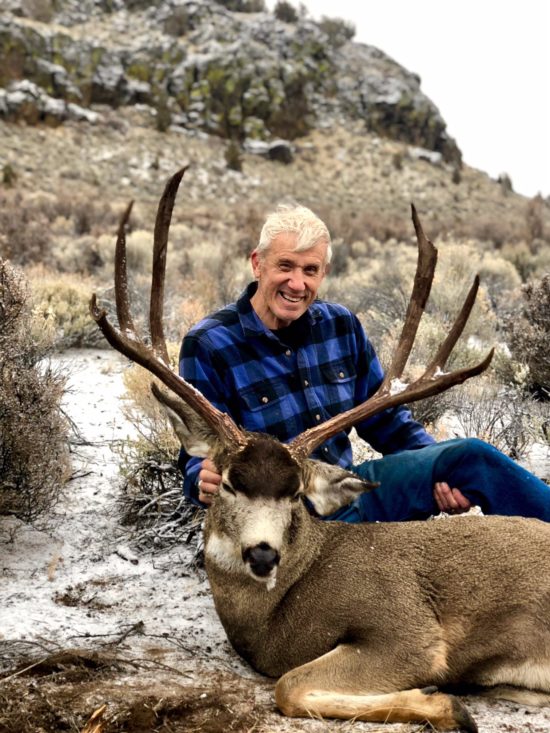
ELK
The Cascade Mountains (that area within Klamath County west of Hwy 97) offer the best opportunities for elk hunting in the Klamath District. The Keno Unit and those areas within the Sprague and Fort Rock Units west of Hwy 97 are included in the general season Cascade elk area. Bull ratios are above management objective and some older age bulls are available. Best prospects are in the Keno and Fort Rock Units.
Elk numbers are lower in the eastern part of the county, and seasons east of Hwy 97 are limited entry. Overall population trends are stable to slightly increasing in some areas but still below population management objectives like much of the region. Archery hunters will have a bull-only bag limit in all units with the exception of the Fort Rock unit east of Hwy 97 where an either-sex bag limit is in effect.
East Interstate, Silver Lake, and East Fort Rock Wildlife Management units
DEER
Deer populations in Lake County continue to be below management objectives. Hunting prospects should be fair to good in all units, with the Silver Lake & Fort Rock units above management objectives for buck ratios and the Interstate unit slightly below. All units have a good component of older bucks. However, spring deer fawn ratios averaged 25 across all units and will affect younger-age buck availability.
In 2018, hunter success increased from 2017 and was above the 3-year averages for all units. With an average winter and a wet spring, water and forage availability is good.
Summer wildfire activity has been low in Lake County, but conditions will continue to dry without significant precipitation. You will find links to Forest Service, BLM and other landowner websites with updated fire restrictions and closure information here, and additional updates in the weekly Recreation Report. As a hunter, it’s your responsibility to make sure the area you plan to hunt is open and accessible.
Some suggested areas to hunt for hunters less familiar with the Lake District:
East Interstate: Hunt any of the wildfire areas that are predominately south of Hwy 140. North of 140, the edges between private timberlands and USFS properties are good spots to check; these areas generally have high quality feed on the private timber properties and good cover on the forest properties.
Silver Lake: The Tool Box Wildfire Complex of 2002 is still providing quality shrub habitat and good deer numbers. If we don’t get fall rains, any of the timbered areas with shrubs in the understory within a few miles of springs and riparian areas will hold deer.
East Fort Rock: Natural openings or old clear-cuts with shrubs in the understory within a few miles of springs and riparian areas are going to be the most productive.
ELK
Elk populations in the district are generally stable but low when compared to other areas of the state. Elk season should be fair to good depending on weather conditions. The Fort Rock and Silver Lake units offer the best opportunity for elk hunting in the Lake District. However, herds are at relatively low densities and cover a lot of country, so hunter success is typically low.
The elk are most consistent in their daily patterns near alfalfa fields. Hunters should select their target animal carefully when elk are in open country in large herds to avoid wounding or hitting multiple animals.
SOUTHEAST AREA
Deer hunting prospects are good for the many units; there are plenty of animals available for harvest for all seasons and weapon choices.
Silvies, Malheur River, Steens Mt, Juniper, Beatys Butte, Wagontire, Warner, and Whitehorse Wildlife Management units
DEER and ELK
All Harney units are currently below population management objective (MO) for deer although the district is seeing an increasing trend in most units over the past 7-8 years. But all units are above buck ratio MO for deer. They are also above both bull ratio and population objectives for elk.
Habitat conditions in the forested areas of the Silvies and Malheur are generally good, the above normal snow pack and wet spring has resulted in plentiful forage and lots of water on the landscape. The risk of wildfire remains a concern.
Most of the large-scale mega fires in this area occurred in 2012-2016. Wildlife and hunters have been able to adapt by using different areas and pockets of cover within those fire boundaries that have started to recover.
Deer populations continue to struggle in many of our units, especially the Malheur River Unit, which saw some unusually high winter kill in 2016-17 due to the heavy snow pack and prolonged cold temperatures. Tag numbers remain reduced in that unit.
Elk populations are stable to increasing in most portions of the Harney District. There are plenty of animals available for harvest for all seasons and weapon choices.
Hunting prospects should be fair to good in the Warner Unit, as it is above management objectives for buck ratios with a good component of older bucks. With an average winter and a wet spring water, forage availability is good.
In the Warner Unit the forested habitats have more deer, and therefore more bucks, than the desert habitats. If you want to hunt the desert portion of the unit there is a lot of private land mixed in with the BLM properties, which will make hunting these areas a challenge.
Elk populations in the Warner unit are generally low and herds cover a lot of territory, so hunter success is typically low. Elk numbers in the northern part of Wagontire (High Desert hunts) are quite variable due to large movements these animals make.
Elk are most consistent in their daily patterns near alfalfa fields. Hunters are advised to select their target animal carefully when elk are in open country in large herds to avoid wounding or hitting multiple animals.
Statistics are becoming more reliable since the implementation of mandatory reporting surveys, and they show harvest remains stable.
Hunters need to have good maps of the area and are encouraged to visit the county website for maps. Make some scouting trips and contact the local biologist to discuss more specifics once you have a better idea of the lay of the land.
Whitehorse and Owyhee Wildlife Management units
DEER
Owyhee Unit, the northern portion of the unit will take some time to recover from the severe winter of 2016-17. Fortunately, winter conditions were very mild with minimal over-winter mortality. However, tag numbers will remain at the reduced levels until the population has fully recovered. Even though it is a very challenging unit to hunt, hunter success has been high with a majority of the bucks harvested the last few years being 3- and 4-points.
East Whitehorse Unit is another difficult unit to hunt if you’re not familiar with the unit. Deer densities are low and they can be widely scattered. The major fires of 2012 continue to have a negative effect.
In the Trout Creek Mountains, the Holloway Fire burned most of this area in 2012, except for the Oregon Canyon and Sherman Field areas. Since the fire, the higher elevations have had decent vegetation recovery. The deer population remains at similar numbers as pre-fire conditions and buck rations are well above 40 bucks per 100 does.
ELK
Whitehorse and Owyhee units are part of the High Desert hunt area. The Whitehorse unit has very few elk. An increasing number of elk have been observed in the northwestern portion of the Owyhee unit. These elk are often observed in large groups and are very nomadic which makes them difficult to locate consistently.
NORTHEAST AREA
Hunters may see a few more yearling bucks in the mix thanks to a mild winter and good over-winter survival. Early season hunters will be challenged by the dry conditions.
Beulah, Sumpter, Keating, Pine Creek, Lookout Mt. Wildlife Management units
Fire conditions are extreme and hunters should check with the land manager (Wallowa-Whitman National Forest or BLM) to find out the latest conditions, as they can change rapidly.
DEER
Over-winter survival was fair in all units with average fawn ratios of 29 per 100 adults counted in the spring. Heavy snow in late winter hurt fawn survival. Animals will be the most active early in the morning and late in the afternoon when temperatures cool off. Hunters should concentrate their efforts in areas of good forage near north slopes that provide good bedding cover.
The Beulah unit, is still recovering from the winter of 2016-17 with a fawn ratio of 24/100 adults. The buck ration is 14/100 does, which is just below the buck management objective of 15/100 does. As a result, tag numbers will remain at lower levels into the future to allow population to recover. With last year’s tag cuts, hunter success was 35 percent, which was down 10 percent from the previous year. There will be a few more yearling bucks available for harvest this year, but only a small increase.
ELK
Elk herds in Baker County came out of the winter in good shape. Bull ratios are at management objective for all units. Calf ratios were above the average in all units. Elk populations in the Keating, Pine Creek and Lookout Mountain units continue to grow and offer good opportunity for hunters.
For the best chance at tagging an elk, get as far away from roads as possible, perhaps by hunting in one of the cooperative Travel Management Areas. Dry conditions this year could make hunting difficult. Animals will be the most active early in the morning and late in the afternoon when temperatures cool off. Hunters should concentrate their efforts in areas of good forage near north slopes that provide good bedding cover.
Murderers Creek, Northside, Desolation Wildlife Management units
The Grant District experienced a harder than normal winter this past year, and deer populations saw declines as result of the winter conditions. Elk populations fared better as they are generally not as effected by weather but the calf ratios were slightly lower than normal.
The summer has been mild with some occasional rains so animals may be scattered as feed is wildly available and in larger than normal quantity.
DEER
Deer populations remain below management objectives in all units and declining after this winter. Buck ratios were at management objective in the Northside and Desolation units but above in Murderers Creek and Heppner units. Spring fawn ratios were a lower than desired, which is likely due to conditions last winter. The lower fawn ratio will cause a decrease in yearling bucks available for harvest this year.
Last year, archery and rifle hunters had average success for Northside and Desolation but above average for Murderers Creek. Lower success is expected this year.
Deer hunters should look for areas where fire has occurred in past 5-15 years as deer tend to favor vegetation that occurs following fires. The Shake Table Fire on Aldrich Mountain is starting to show signs of increasing deer and may be a good place to find a buck.
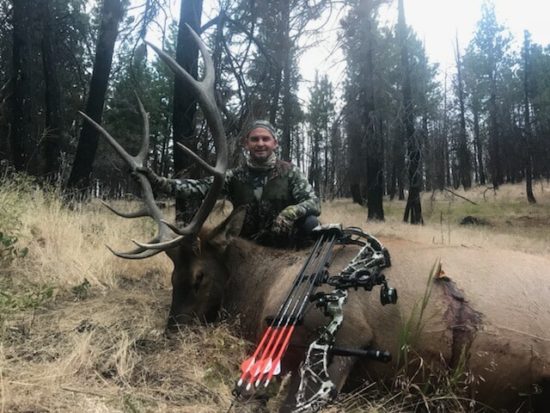
ELK
Hunting prospects are average for the district. Elk populations are steady in most of the district and above management objective in all units except West Beulah. We have had slightly lower calf ratios and good bull ratios in most of the district.
Elk hunters should focus on areas with no open roads as elk tend to move away from traveled roads during hunting seasons.
Heppner, Fossil, East Biggs, southern Columbia Basin Wildlife Management units
DEER
Last year, deer populations in all of the units decreased due to the long dry summer and cold late winter. Fawn survival last year was poor and deer hunters will have a harder time finding yearling bucks this hunting season.
The summer has been fairly mild with decent forage conditions in the higher elevations and poorer conditions as you drop in elevation. Unless conditions change, early season hunters will want to focus on areas of good forage and water.
Public lands hunters in the Fossil unit have historically had better success in the Wheeler burn, but deer numbers and success rates in that area have decreased the last few years. Fossil unit hunters might look to other areas for better deer hunting this fall. Public land hunters can also hunt the Heppner Regulated Hunt Area in the Heppner unit.
The Columbia Basin is mostly all private land so hunters will need to secure access or hunt on some of the limited private land where ODFW has access agreements with the private landowners to allow public hunting access, such as the Open Fields access areas in the Columbia Basin unit.
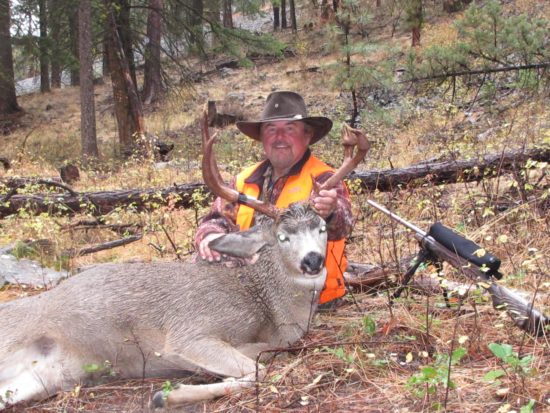
ELK
The elk population in the Heppner unit is still slightly above management objective for the unit and the Fossil unit’s population is stable. Bull ratios have remained constant from last year for both units. The elk calf ratio for both units decreased slightly from last year but hunters should still find decent numbers of spike bulls. There are still good numbers of older age class bulls throughout the forest.
Starkey, Catherine Creek, Mt. Emily, Sled Springs, and Wenaha Wildlife Management units
(The 2019 update for these units was not available at press time. For your information, we have included last year’s information below.)
DEER and ELK
Elk and deer numbers are stable throughout the Union County. Elk came through the winter well and calf survival is up. As a result, spike hunters can expect to see more yearling bulls this season. All units are at or above management objective for elk.
Deer numbers are stable, but are below management objective in all units. While deer numbers are still down, hunters may encounter more yearling bucks this season due to an increase in fawn survival over the winter.
Hunters can expect dry conditions in the early seasons that will keep animals closer to water sources such as springs and creek bottoms. Animals move little during warm conditions and hunters will need patience to be successful.
The Starkey Unit Travel Management Area is a great place to start for big game hunters new to the area; maps are available online or at the La Grande office. General spike season is a great time to elk hunt in the Starkey unit without the crowds of first season. Look for elk in the steep terrain of the Starkey and Catherine Creek units.
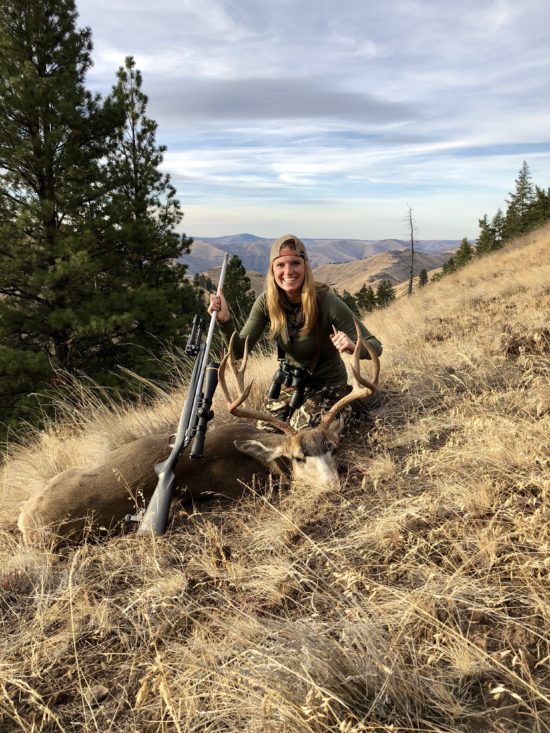
Wenaha, Sled Springs, Chesnimnus, Snake River, Minam, Imnaha Wildlife Management units
DEER and ELK
While mule deer populations are still low, white-tailed deer have had better fawn survival and buck season is expected to be fair in all units. Elk populations are doing well, and hunters can expect good prospects for bull hunting in all units. Deer populations are below MO in all units, while elk populations are above in all units except the Wenaha and Snake River.
Archery season is expected to be warm and dry as usual, making hunting conditions a little difficult. Archers in the Sled Springs unit need to be aware of motor vehicle restrictions and no camping restrictions on Hancock Timber property during fire season.
The district has not detected any drop in deer or elk populations as a result of wolf activity.
Walla Walla, Mt. Emily, Ukiah, eastern portion of Heppner, northern Columbia Basin Wildlife Management units
DEER and ELK
Mule deer survival rates were good considering the harsh winter we experienced here in Umatilla County. However, mule deer numbers are below management objectives in all units. Buck ratios continue to be strong in all units and hunters can expect similar buck numbers to the previous two years.
Whitetail deer continue to expand in numbers and range across the district. Hunters will find very similar elk numbers to previous years. Overwinter survival was good with calf ratios remaining stable ranging from 16 to 20 calves in all three units. Both spike and branch bull hunters should expect good potential for this year’s hunts throughout the district.
With the heavy over winter snow pack and timely spring rains, forage conditions are abundant at mid and upper elevations. Due to an abundance of forage, hunters may find animals are more dispersed than in years past when they were concentrated near food sources. However, hunters should continue to focus on north facing slopes where good bedding areas are more prevalent. Also, until temperatures begin to drop later in the year, be sure to hunt around dawn and dusk when animals are more likely to be active.

